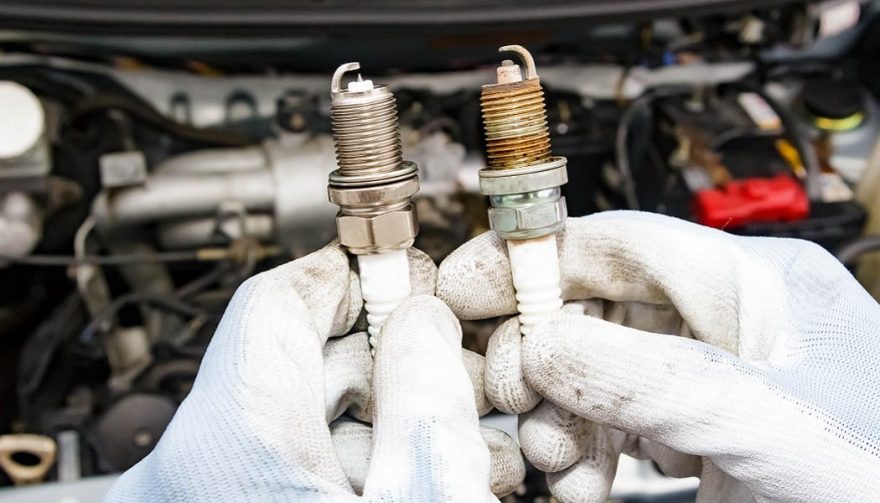
Get an owner's manual for your car to help you learn how to change spark plugs
How to Change Your Spark Plugs: Anybody Can Do It
If you’re how to change spark plugs, it’s pretty straight forward. It’s a car repair that’s within the skill level of almost everybody who tinkers with cars.
If you know how to change spark plugs, you can save some serious money as well. Labor rates and dealerships and repair shops can hit $100 per hour. Ouch.
Money saved is money you can apply towards buying more car tools, which is always a great investment. Car maintenance is also a great hobby, and if you have children, it’s a skill you can get them interested in.
How to Change Spark Plugs
If this is your first foray into replacing spark plugs, these 10 tips will make the process more enjoyable for you.
Buy an Owner’s Manual for Your Car
Engine compartments are crowded with components, some of which must be removed to gain access to the spark plugs. Other components can be worked around. Which ones? Read and learn before you disassemble too much. Shorten the learning curve by reading.
Buy Only Original Brand Name Spark Plugs
Modern engines can be finicky about brand name parts. That’s because air/fuel ratios are run as lean as possible to reduce emissions and to improve fuel economy. Igniting that lean mixture takes a very high voltage spark.
Don’t leave all that to chance, buy only the original brand spark plugs your car came equipped with when it was new.
Purchase Some Good Quality Tools
You will need a spark plug socket of the correct size, a ratchet, some extensions of different lengths and a universal joint, all in 3/8” drive. To install the new spark plugs, you will need a short length of rubber vacuum hose that fits snugly over the plug. That helps you start threading the new spark plugs in easily, and helps to avoid damage by cross treading. A long magnet pick up tool is cheap, so get one as well.
You’ve probably already learned that when you drop a small tool or part, it will always roll on the garage floor to the exact center of the car, just beyond reach. I don’t understand that phenomenon, I just know that it occurs with predictability. Buy some good work gloves to protect your hands.
Wait Until the Engine is Cold
Modern engines have aluminum alloy cylinder heads, which means the metal is soft, especially when it is hot. Spark plugs have a life of 100,000 miles, so they might be difficult to turn and remove after being in place that long. Play it safe, let the car cool down overnight before working.
Don’t Break Your Plug Wires
The neoprene boot on the spark plug wire will be baked onto the spark plug from heat and use. Twist it slightly to break the bond before pulling the wire off.
Chances are the wire’s fragile inner conductors will be damaged anyway, so plan on replacing the plug wires as well. Buy good quality ones.
Buy Some Dielectric Grease
A small tube goes a long way. Your new plug wire set might even come with dielectric grease. Apply it liberally to the inner surface of the plug wires before snapping them on the spark plugs. The grease helps keep moisture out and aids in removing the wires.
Don’t Fear Coil-On-Plug Ignitions
Just two small nuts hold the coils in place. Simply unclip the wire lead from each coil, remove the nuts, and twist the coil slightly to break the bond of its small neoprene plug boot to the spark plug.
Remove the coil by pulling it straight out. Coils are interchangeable among cylinders, but I always liked to install them back in the cylinders they came from, just because.
Turn Spark Plugs Very Slowly When Removing
Back them out 1/8th of a turn. If you feel there was too much resistance, then turn them back in, then slowly turn them out a little further.
Still too tight? Turn them back in, then out a little further still. Work them back and forth like that, to avoid damaging the cylinder heads. Remember, there is probably a carbon build up on the last thread of the spark plugs, where they protruded into the combustion chambers. That carbon is resisting their removal. Go slowly.
Measure the Gap on Your New Spark Plugs
They are probably gapped correctly, but check them anyway. Buy an inexpensive feeler gauge and add it to your tool collection.
Buy Some High-Temperature Anti-Seize
Many technicians recommend applying a very thin layer of copper ant- seize compound to the new spark plug threads before installation. That should help ease their removal next time.
Check Your Make and Model for Any Known Problems
If you’re not careful, you can damage the threads in the cylinder head. Some cars are more susceptible than others to that type of damage.
Check to see if your car’s manufacturer publishes a TSB, Technical Service Bulletin. It will give you specific directions and instructions to help you know how to change spark plugs in your car.
So, have fun, save money, learn along the way, and get your children involved too.





